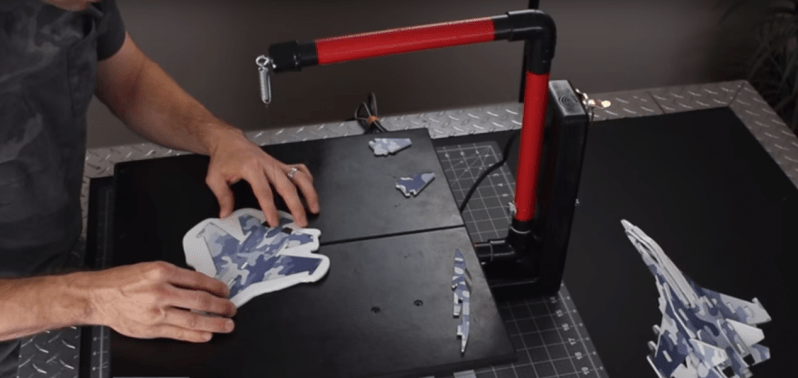[The King of Random] always seems to have something fun going on in his shop, and his builds tend to be impressively complete. No exception to that rule is his recent hot-wire foam cutter that looks like a ton of fun both to build and to use.
Starting with a simple PVC tubing frame to form the bow of the cutter, the rig ends up looking a little like a scroll saw when [Random] is done with it. A generous work surface sits atop a wood frame, which houses the electrics. A light dimmer and step-down transformer control the cutting wire’s temperature, and the bow even pivots to allow the wire to make miter cuts. A nice final touch is that the frame holding the bow detaches from and store inside the base, making the whole thing portable. It even runs off solar or batteries if you need to work off-grid, which might be handy for quick repairs on the R/C flight line.
Speaking of R/C, check out these hot-wire cut foam airplane wings. And the completeness of this build gets us thinking about the potential for CNC foam cutters.
Thanks for the tip, [Keith O.]















That’s super nice. I made a few of those as well: http://inventorartist.com/category/hotwire/
Nice build, ideal for the more delicate shapes.
Nice – especially how it compacts for storage. I built a non-collapsible version. I found that the spring attaching the nichrome wire to the PVC wasn’t necessary. The PVC elbow isn’t rigid and has all the spring you need.
I got stuck with why the elbows are on the pipes when the wire is being threaded……
Brings back memories of a Summer job in a factory that did a lot of cutting foam. I can still smell it to this day…
Please help me to build one for my classroom at school
Thank you
Not often that I see primary side regulation. It has a lot of advantages.
Only thing I’d like to add would be an indicator light.
Safety warning: Using such a fuse holder in the primary circuit can be dangerous! The contacts inside of the fuse holder can pop out and carry a harmfull (110/220V) voltage. So, make sure to use a fuse holder that is designed for a ‘life’ voltage circuit. (Not the 12V type used in cars)
2nd remark; the dimmer used, should be designed for ‘low-power’ as some dimmers need a minimum load. If the minimum load is not connected, the dimmer may not work properly. I estimate that the load of the circuit is no more then about 10-15 VA, not all dimmers can operate at such a low power.
Do you think a dimmer is that necessary? I was thinking of making one without it.
What’s with the red duct tape?!
Did he forget to pick-up a can of red spray paint while he was out shopping for supplies at the hardware store?
Duct tape doesn’t come cheap these days.